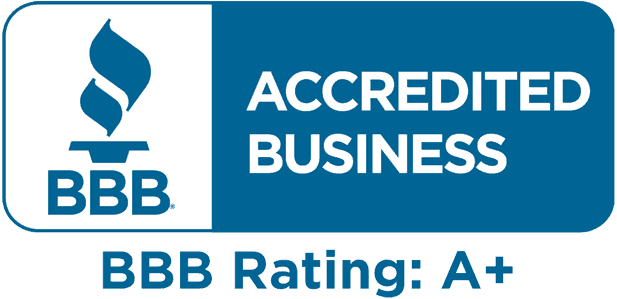There’s a lot of misleading information about Medicare out there, and when you’re trying to choose a policy or figure out what your plan covers, it can be hard to sort out the facts from the fiction. When you’re dealing with something as important as your health care — and your wallet — you can’t afford to get it wrong.
We’ve researched some of the most common myths and beliefs about Medicare so you can have the most up-to-date information all in one place. From Medicare Advantage to Medigap policies, we’ll debunk some of the myths and explain the terms you’ve been hearing about in the news or from your doctor.
MYTHS ABOUT MEDICARE
First, where do myths about Medicare come from? Why is it so hard to find the answers to all of your every day Medicare questions? Well, it depends on where you look.
One reason is that Medicare is administered by the federal government, but costs and policies can vary from state to state. So that makes it the perfect subject for politicians to argue about, whether it’s to warn about bankruptcy or to promise to expand coverage in their state. It’s easy to confuse claims about Medicare with other programs, such as Medicaid or Obamacare, which are totally different systems.
Another reason is that some Medicare policies are offered by private insurers, so they stand to gain or lose money depending on which policy you choose. Always talk to a licensed insurance agent or a doctor you trust if you suspect your insurer isn’t being honest with you or you’ve received mail that looks like a Medicare scam. Verify any terms and definitions at Medicare.gov, the only official Medicare website.
In the end, many of these Medicare myths aren’t lies, exactly. It’s just that, what’s right in some situations or in some states may be inaccurate in others. Here are 5 of the most common Medicare myths and what they really mean for your health care options.
Myth 1: You’ll be automatically enrolled in Medicare when you turn 65.
The truth: You may or may not be, depending on your situation.
Wouldn’t it be so much easier if you could count on being enrolled in the best policy for you? Unfortunately, signing up for Medicare usually involves a little digging around and actively choosing a policy. Most people have a 7-month window in which to enroll that starts 3 months before and ends three months after the month of your 65th birthday.
There are some exceptions. If you’re already receiving Social Security benefits when you turn 65, you’ll be automatically enrolled in Original Medicare Parts A & B. You’ll receive a Medicare card in the mail if this is the case for you.
You can start receiving Medicare benefits before you turn 65 if you have a disability that entitles you to Social Security Disability Insurance.
And, if you have health insurance coverage through your employer, then you can opt to delay your enrollment in Medicare without facing a penalty.
In most cases, you’ll need to actively choose to enroll or delay your enrollment during your Initial Enrollment Period. If you sign up outside of this window, then you may be subject to a late enrollment penalty, or have trouble getting the policy you want.
Myth 2: Everyone pays the same amount for Medicare.
The truth: Some parts of Medicare have standardized costs for everyone, but others are based on your age, location, income, and work history.
Most people who enroll in Original Medicare don’t pay a premium for Part A — because they’ve already paid their share in payroll or self-employment taxes. If you’ve worked for 10 years (40 quarters), you won’t have to pay a premium. If you’ve worked less than that, then you may pay $240-427 per month, depending on how much you’ve worked.
Nearly everyone pays the same premium ($135.50 per month) for Part B. However, you may qualify for help paying your premiums if have a low income.
If you earn more than $85,000 per year, then you’ll pay a higher premium based on the Income Related Monthly Adjustment Amount.
The other parts of Medicare — Medicare Advantage, Medicare Supplement Insurance, and prescription drug coverage — are offered by private insurers, so your premium will vary based on your age, state of residence, and other factors.
Myth 3: Medicare covers all of your health care expenses.
The truth: There are limits to what Original Medicare will pay for — but you can expand your coverage options with a Medicare Advantage or Medigap policy.
It would be great if you could just show your Medicare card to your doctor and be treated for any health issues without worrying about costs. But Original Medicare doesn’t cover everything, so you may have to pay out-of-pocket costs for some treatments.
There are some services that Original Medicare never covers, such as vision, dental, and hearing services. You’ll only be covered for this type of care if you sign up for a Medicare Advantage policy that offers these benefits.
Original Medicare doesn’t cover prescription drugs either. You can get coverage through a standalone policy (Medicare Part D) or through Medicare Advantage or Medigap.
Finally, Original Medicare doesn’t cover long term care. You’ll be covered for up to 90 days of hospital care for each period of illness, but not for long-term nursing home or hospice care. You’ll also have to pay coinsurance for your hospital stay.
Other services, such as colonoscopies, vaccines, and chiropractic care, fall into a grey area, so you’ll have to find out if you’re covered on a case-by-case basis.
What can you do if you want to expand your coverage? Many people choose to enroll in a Medicare Advantage or Medigap policy to fill in some of the “gaps”. These options cost more but typically provide additional coverage. For example, a Medigap policy will pay for 365 additional days of hospital care after Original Medicare runs out.
Regardless of which policy you choose, your benefits won’t kick in until you pay the annual deductible. But if you enroll in a Medigap or Medicare Advantage policy, you’ll have the security of an out-of-pocket maximum to ensure that your costs don’t skyrocket if you have a long-term illness requiring extensive care.
Myth 4: You’ll have to switch doctors when you enroll in Medicare.
The truth: Nearly 90% of doctors accept Medicare patients — although some Medicare Advantage plans require you to see in-network doctors.
There’s nothing worse than switching to a new insurance policy and finding out that your trusted family doctor doesn’t accept it. The only surefire way to ensure that you can keep seeing your doctor is to ask him or her directly if they take Medicare.
If your doctor is a non-participating provider, then they can charge up to 15% more than the Medicare-approved rate. You can either pay the difference out-of-pocket or sign up for a Medigap policy that covers these excess costs.
If you’re enrolling in a Medicare Advantage policy, then the situation is a little different. Your plan will be either an HMO or a PPO policy with its own network of doctors. If you see a doctor out of the network, you’ll have to pay a higher percentage of the bill.
Which plan you choose depends on how much flexibility you want. Original Medicare doesn’t have a “network”, so you can see any doctor who accepts Medicare locally or even when traveling out-of-state. You’ll have to decide if the benefits of a Medicare Advantage policy outweigh the limitations on which doctors you can see.
Myth 5: All of the best Medicare options are going away.
The truth: There have been some changes to Medicare in 2019, but most beneficiaries won’t be affected by them.
You may have heard about major changes that will affect your Medicare options in 2019 and 2020, but these mostly apply to new Medigap enrollments. Two of the most popular Medigap plans (C and F) are going away.
Beginning on January 1, 2020, you’ll no longer be able to enroll in either of these plans, although if you currently have them, you’ll be able to keep them.
Will this limit your Medicare options? Not really. The only difference between Plan F and the next best plan (Plan G) is that Plan F covers the Part B deductible. For most people, Plan G is the better deal anyway, since it typically has a lower premium.
Another big change is that Medicare Cost Plans are being phased out in some places. But since only 600,000 people are enrolled in these policies (compared to 20 million enrolled in Medicare Advantage), most people won’t notice a difference.
WE CAN HELP
These are just five of the most common myths associated with Medicare. Depending on which policies you’re researching, you’re likely to encounter even more. Don’t let these misconceptions fool you: there are answers out there, and we can help you find them!
Whether you’re considering switching policies, or just signing up for the first time, we’ll help you figure out which plan is right for you. Just fill out our contact form, and one of the licensed insurance agents at the Medicare Store will get back to you shortly!



